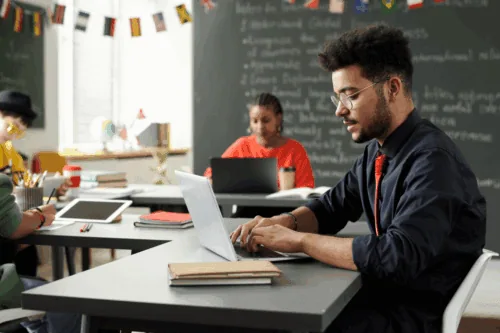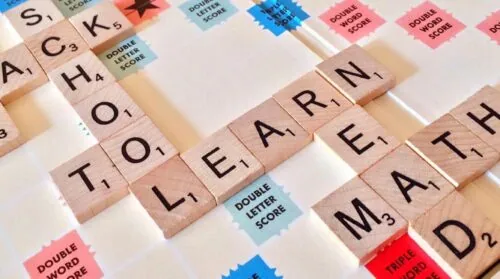Welcome to our comprehensive guide exploring the meaning and importance of multicultural education. In today’s diverse world, understanding and integrating multiple cultural perspectives in the educational system is not just beneficial—it’s essential. This guide is crafted for entry-level job seekers and young professionals eager to engage with inclusive, diversity-focused educational environments.
Multicultural education is more than just an educational philosophy; it’s a practical approach to engagement in a world that values diversity and inclusiveness. Whether you’re a student, a new graduate, or a professional looking to expand your understanding, this guide will provide you with key insights into how multicultural education shapes personal, academic, and professional landscapes.
Discover how you can contribute to and benefit from environments that embrace diverse perspectives. Let’s explore the transformative potential of multicultural education together!
Understanding Multicultural Education
Multicultural education goes beyond simple exposure to various cultures in a classroom setting; it integrates diverse cultural perspectives into the daily curriculum.
Core Aspects of Multicultural Education
Let’s explore the foundational elements that make up the meaning of multicultural education:
- Content Integration: This involves using examples and content from a variety of cultures and groups to illustrate key concepts in subjects like history, science, and literature.
- Knowledge Construction: Teachers help students understand how knowledge is created and influenced by cultural biases. This fosters critical thinking about how information is framed and taught.
- Prejudice Reduction: This aspect focuses on developing students’ attitudes so that they appreciate and respect diversity.
- Equity Pedagogy: Educators modify their teaching methods to accommodate diverse learning styles and facilitate the academic success of students from different backgrounds.
- Empowering School Culture: Schools must cultivate an environment that supports and champions diversity, ensuring that all cultural groups feel safe, represented, and valued.
These elements collectively contribute to a holistic approach that enriches learning environments and fosters mutual understanding and respect among students.
Why Does It Matter?
In today’s globally connected world, understanding and valuing cultural diversity has become paramount. Multicultural focused education isn’t just beneficial; it’s essential. It fosters social harmony and prepares students to thrive in a diverse workforce. Moreover, it helps dismantle racial and cultural stereotypes, leading to a more inclusive society.
Grasping the full meaning of multicultural education aids in developing educational settings that reflect the reality of our diverse world, allowing every student the opportunity to succeed and feel valued.
Key Components of Multicultural Education
Multicultural education is grounded in five key components that support its efficacy and reach in transforming educational environments. These components ensure that students from all backgrounds feel represented and appreciated.
Education Equity
Equal access to education resources and opportunities is fundamental. Schools must provide all students, regardless of their background, with access to the same high-quality materials, instructions, and support. This aims to level the playing field and promote fairness within the educational system.
Inclusive Curriculum
An inclusive curriculum incorporates and respects a wide range of cultural perspectives. This not only reinforces the importance of diversity but also enhances students’ understanding of the world around them. Teachers are encouraged to:
- Include literature and examples from diverse cultures.
- Discuss and acknowledge important historical events from different viewpoints.
- Integrate multicultural perspectives in all subject areas, not just social studies or history.
Teacher Training
For a multicultural approach to be implemented effectively, ongoing teacher training is crucial. Educators must be equipped with cultural competencies to manage dynamic, diverse classrooms skillfully.
Community and Parental Involvement
Engaging the community and parents in multicultural education processes enhances its impact. Schools can organize events and workshops that educate and involve parents and community members, fostering an extended supportive environment.
Assessment and Accountability
Regular assessment of multicultural practices and student outcomes helps ensure that multicultural focused education objectives are being met. Schools should have mechanisms in place to measure the effectiveness of their multicultural education strategies and make necessary adjustments.
By focusing on these key components, educators are better equipped to develop and implement a multicultural education program that is truthful to its meaning and effective in achieving its goals.
Benefits of Multicultural Education
Multicultural education offers extensive advantages, enhancing both personal and academic development. Here’s how:
Enhances Cultural Awareness
Students learn about diverse cultures, their histories, and contributions. This awareness builds respect and empathy among peers.
Boosts Critical Thinking
Exposure to multiple perspectives encourages students to think critically and challenge preconceptions. These skills are crucial for academic success and future careers.
Promotes Social Skills
Interacting with peers from varied backgrounds fosters social skills. Students learn to communicate and collaborate effectively with anyone.
Prepares for Global Economy
As businesses expand globally, employees with cross-cultural competencies are invaluable. Multicultural education prepares students for these opportunities.
Reduces Social Prejudices
Learners are less likely to form stereotypes and more likely to challenge discriminatory behaviors, promoting a healthier, more inclusive society.
Supports Equity in Education
It strives to provide all students with access to the same learning opportunities, regardless of their background. Details on equitable educational practices can be explored here.
Strengthens Community Connections
Schools that embrace diversity often experience stronger community ties. Parents and local groups feel more invested when they see their cultural heritage respected and included.
The benefits of multicultural education extend far beyond the classroom, instilling values that students carry throughout life.
Challenges in Implementing Multicultural Education
While the benefits of multicultural education are clear, schools often encounter several challenges when implementing these programs effectively.
Limited Resources
Many schools face financial constraints that limit their ability to provide diverse materials and training essential for a robust multicultural education.
Resistance to Change
Some educators and communities may resist changing traditional curriculums, viewing multicultural education as unnecessary or divisive.
Cultural Misunderstandings
Without proper training, educators may inadvertently reinforce stereotypes or provide inaccurate representations of cultures.
Curriculum Overload
Integrating multicultural content can be challenging as educators must balance it with existing national education standards and testing requirements.
Lack of Training
Educators often lack the training needed to effectively implement and teach multicultural curriculums, impacting the program’s success.
Assessment Difficulties
Measuring the success of multicultural education initiatives can be complex, as traditional metrics may not capture nuanced cultural learning and attitudes. The Office of Postsecondary Education provides further insights into effective practices.
Addressing these challenges requires dedicated effort, resources, and a commitment to continuous improvement and community involvement in education.
Case Studies: Successful Multicultural Education Programs
Multicultural education has been effectively implemented in various educational institutions. These examples illustrate its positive impact.
New York City’s Global Education Framework
In New York, schools have adopted a global education framework that emphasizes world languages and cultures. This program fosters global citizenship and multicultural understanding among students. Details on similar frameworks can be found here.
The International Baccalaureate (IB) Program
The IB program is renowned globally for its rigorous curriculum, which promotes intercultural understanding and respect. It’s an example of how high standards and multicultural education can coexist.
Montclair State University’s Teacher Education Program
This university offers a program specifically designed to prepare teachers for culturally diverse classrooms. This approach ensures that future educators are ready to apply multicultural practices effectively. Explore more about this program on their official site.
Bilingual Education in Texas
Texas has implemented successful bilingual programs in many of its schools, supporting not just language acquisition but also cultural appreciation among English—and Spanish-speaking students. Learn more about Texas’s initiatives here.
These case studies show that with commitment and proper execution, multicultural education supports academic achievement and prepares students for a diverse global society.
How Multicultural Education Shapes Future Generations
Multicultural education meaning extends beyond the classroom, influencing the attitudes and behaviors of future generations. It prepares young individuals to thrive in a multicultural world. Here’s how:
Workplace Readiness
Students who experience multicultural education are better prepared for diverse workplaces. They are more adaptable and can collaborate with colleagues from various backgrounds.
Social Cohesion
This educational approach promotes understanding across different cultures, which can reduce societal tensions and build a more cohesive community.
Inclusive Leadership
Students learn to lead with inclusivity, considering multiple perspectives in their decision-making processes, which is essential for effective leadership in any field.
Civic Engagement
Understanding and appreciating cultural diversity encourages more participation in civic and community activities, fostering a robust democratic society.
These transformative outcomes underscore the relevance and need for effective multicultural education. It doesn’t merely prepare students for tests; it prepares them for life in an interconnected world.
Further Resources on Multicultural Education
To deepen your understanding of multicultural education meaning and its implementation, several resources are available:
Educational Publications
Books and academic journals offer in-depth analyses and discussions about multicultural education, its strategies, and its outcomes. JSTOR provides access to numerous scholarly articles on this topic.
Online Courses
Platforms like Coursera offer courses that can help educators understand and apply multicultural education principles in their teaching practices.
Workshops and Seminars
Many educational institutions and organizations conduct workshops and seminars to train teachers in multicultural competencies. These are vital for applying the theory to classroom settings effectively.
Government and Non-Profit Organizations
Entities such as the U.S. Department of Education and UNESCO provide guidelines and policies that support multicultural education initiatives globally.
Gleaning insights from these resources can significantly enhance the implementation and effectiveness of multicultural education programs.
FAQs
Common questions about multicultural education can help clarify its purpose and implementation. Here are some frequently asked questions:
What is multicultural education?
Multicultural education is the practice of integrating all cultural perspectives into teaching methods to support and foster diversity and inclusion in schools.
Why is multicultural education important?
It prepares students for global societies, enhances cultural awareness, and promotes equality in educational opportunities.
How can schools implement multicultural education effectively?
Schools can integrate multicultural content into the curriculum, train teachers, and engage with diverse communities effectively.
Is multicultural education only for certain schools or regions?
No, it’s important and beneficial for all educational settings, whether urban, rural, or suburban, to include multicultural elements.
Can multicultural education help improve academic performance?
Yes, studies suggest that when students feel respected and included, their academic engagement and performance are enhanced.
These FAQs provide a starting point for understanding the meaning of multicultural education and its significant impacts.
Conclusion
Multicultural education is an essential approach that goes beyond simply teaching about different cultures; it integrates and respects these cultures within the educational system. This approach enriches students’ learning experiences and prepares them to thrive in a globally connected world. It promotes equity, enhances cultural awareness, and prepares students as future professionals who can respect and collaborate across diverse cultures.
Join Diversity Employment
Are you looking to support or engage with environments that prioritize your diversity job search? Consider joining Diversity Employment, where you can find opportunities, resources, and a community dedicated to promoting multicultural environments. Together, we can make a difference in creating educational and professional spaces that value and celebrate diversity.




